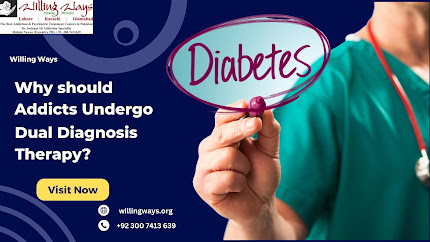What are the symptoms of narcolepsy?
There are two main narcolepsy symptoms the people that are pointed out at the best addiction treatment center in Karachi rehab center for available to know the treatment of narcissistic personality disorder and that are all about the symptoms of narcolepsy:
- Excessive Daytime Sleepiness (EDS).
- An abnormal pattern of rapid eye movement (REM) sleep.
To
understand this better, let's consider a normal sleep pattern consisting of
five stages.
- Stage 1. During stage 1 sleep, you drift in and out of sleep and can be easily awakened. Your eyes move very slowly, and muscle activity begins to slow.
- Stage 2. As you enter stage 2 sleep (which accounts for about half of your total sleep time), eye movement stops, and your brain activity slows.
- Stage 3. In stage 3 of sleep, your brain activity continues to slow, and the brain begins to produce what is known as delta waves.
- Stage 4. During stage 4 sleep (which together with stage 3 sleep, is referred to as "deep sleep") your brain produces mainly delta waves and there is no eye movement or muscle activity.
- Stage 5. In a normal sleep pattern, you will reach stage 5 sleep after about 60 to 90 minutes. Stage 5 sleep is also known as REM sleep, and it is during this cycle, which lasts for about 30 minutes, you dream. Your heart rate increases, your blood pressure rises, and your breathing becomes more rapid, irregular and shallow. During REM sleep, your eyes jerk rapidly in all directions, and your limb muscles become temporarily paralyzed. If you are woken during this cycle, you will often remember bizarre and illogical tales.
This 5 phase
cycle of sleep, which normally last about 90 to 120 minutes, is repeated
several times during the night, and, as it does so, the length of time spent in
REM sleep gradually increases as the time spent in stage 3 and stage 4 sleep
reduces. By morning, you spend most of your time moving between stage 1 and 2
sleep and REM sleep.
In
narcolepsy, the order and length of your sleep cycles are altered, with REM
sleep appearing shortly after falling asleep rather than following a period of
deep sleep.
In addition,
some of the characteristics of REM sleep also appear at abnormal times, often
giving rise to narcolepsy being referred to as a REM sleep disorder.
In
particular, three specific characteristics of REM sleep appear as narcolepsy
symptoms:
- Cataplexy. Seen in about two-thirds of all cases of narcolepsy, cataplexy can appear at the same time as excessive daytime sleepiness or may not be seen until several years after the onset of the disease.
- Cataplexy is a temporary loss of muscle control that can range from relatively minor symptoms, such as weakness at the knees, to a complete collapse causing you to fall to the ground. Episodes can last from a few seconds to several minutes and occur occasionally or several times daily. You remain conscious throughout these episodes but are normally unable to speak.
- Cataplexy episodes are normally triggered by events associated with strong emotions, such as laughing, surprise or anger.
- Hallucinations. About half of all narcolepsy sufferers will experience vivid dream-like images, known as hypnagogic hallucinations, as they drift into sleep. Often these images can be frightening, not least because you're still partially conscious between wakefulness and sleep but cannot control these images.
- The nature of the images seen often gives rise to feelings ranging from anxiety, through fear, to absolute dread. It is not uncommon for these episodes to lead you to believe you suffer from some form of mental illness.
- Sleep paralysis. Again about half of all narcolepsy sufferers experience sleep paralysis in which there is a brief loss of muscle control as you drift into or out of sleep. In this still partially conscious state between being awake and asleep, you retain a general awareness of your surroundings but cannot move or speak.
Sleep paralysis can appear at the same time as
hypnagogic hallucinations and, for some sufferers, the resulting feelings of
terror can appear overwhelming.
These
'major' symptoms can appear all at the same time or may develop over several
years. Some may not appear at all. Indeed only about a quarter of all sufferers
experience all four of this disorder's major symptoms. The one narcolepsy
symptom that is always present, however, is excessive daytime sleepiness.
In addition
to these main symptoms, sufferers may experience:
Automatic behaviour. Here you find that you carry out routine tasks without being aware that you are doing them or having any recollection afterwards of having carried them out. This often extends to behaviour that appears to have little purpose and can also be accompanied by talking in a meaningless fashion and making little or no sense. This behaviour is effectively being carried out in a state that is halfway between wakefulness and sleep.
- Disturbed sleep. Waking repeatedly during the night.
- Difficulty concentrating.
- Loss of memory.
- Double vision.




Comments
Post a Comment